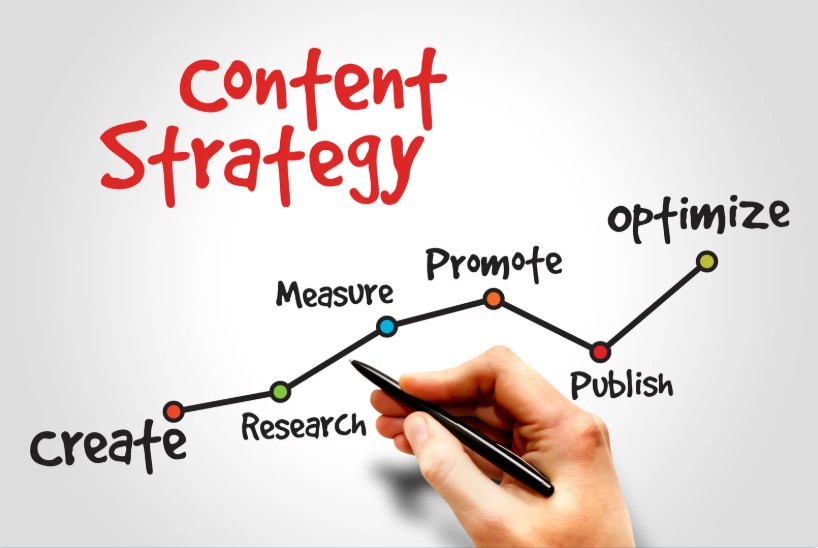Big data has revolutionized the way we collect, store, and analyze data. In recent years, the field of big data development has evolved to meet the increasing demand for sophisticated technologies that can handle vast amounts of data. This transformation has made it possible for organizations to extract valuable insights, improve decision-making, and enhance operational efficiency. As businesses continue to leverage big data, they must navigate key trends, technological challenges, and look ahead to the future of data-driven development.
Understanding Big Data Development
Big data development is the process of creating and implementing technologies and systems designed to store, process, and analyze large and complex datasets. These datasets are often too vast to be handled by traditional data processing methods. In today’s data-driven world, big data development plays a crucial role in fields like healthcare, finance, retail, and beyond. The demand for solutions that can process this data has spurred the growth of innovative tools and platforms.
The main drivers of big data growth are the three V’s: volume, variety, and velocity. Data is generated at an exponential rate, from online transactions to social media posts and sensor data from IoT devices. The variety of this data – structured, semi-structured, and unstructured – presents its own set of challenges. Finally, the velocity at which data is generated requires real-time processing and analytics. This environment makes big data development crucial for businesses aiming to remain competitive in an increasingly data-driven world.
At its core, big data development involves both the backend infrastructure – including databases and processing frameworks – and the front-end technologies that help visualize and interpret the data. Over time, the development of new tools and technologies has allowed for the better management of these large datasets. The landscape of big data development continues to expand, driven by advances in cloud computing, machine learning, and artificial intelligence.
Key Trends Shaping Big Data Development
As big data development continues to evolve, several trends are shaping the future of data technologies. These trends have transformed how businesses approach data analytics and have become essential for organizations aiming to stay ahead in the market.
Artificial Intelligence and Machine Learning Integration
One of the most notable trends in big data development is the integration of artificial intelligence (AI) and machine learning (ML). These technologies are enhancing the value of big data by automating the analysis of large datasets and uncovering patterns that would be difficult for humans to spot. AI and ML algorithms are increasingly used to predict consumer behavior, optimize supply chains, and detect fraud in real time. By leveraging big data, businesses can create predictive models that help them make more informed decisions and drive better outcomes.
Cloud Computing
Another critical trend in big data development is the rise of cloud computing. Cloud-based services, such as Amazon Web Services (AWS), Google Cloud, and Microsoft Azure, have revolutionized how companies manage their data. These platforms provide scalable infrastructure that allows businesses to store vast amounts of data without the need for expensive on-premise hardware. Cloud computing enables real-time data processing, making it easier for businesses to scale their big data applications as their needs grow. As a result, organizations can focus more on deriving insights from data rather than worrying about maintaining and scaling physical infrastructure.
Edge Computing
The growing reliance on the Internet of Things (IoT) devices has highlighted the importance of edge computing in big data development. Edge computing refers to the practice of processing data closer to where it is generated, such as on sensors or IoT devices, instead of sending it to a central server for processing. This approach reduces latency and allows for faster decision-making, particularly in industries that require real-time analysis, such as healthcare and manufacturing. As IoT continues to expand, edge computing will play an increasingly important role in big data development, enabling businesses to process data quickly and efficiently.
Data Privacy and Security
With the rise of big data, there has also been an increasing focus on data privacy and security. Organizations are handling vast amounts of personal and sensitive data, making it essential to protect this information from unauthorized access. Data breaches and privacy violations can lead to significant financial and reputational damage. To address these concerns, businesses are investing heavily in cybersecurity measures, such as encryption and secure data storage solutions. Furthermore, regulations like the General Data Protection Regulation (GDPR) have forced companies to rethink how they collect, store, and process personal data, ensuring that they comply with strict privacy standards.
Data Democratization
Data democratization is the process of making data accessible to non-technical users within an organization. In the past, data analytics were primarily handled by data scientists and engineers. However, advancements in big data tools and dashboards have allowed for data to be more widely available. Business analysts, marketers, and even executives can now access real-time data insights to drive decision-making. By democratizing data, organizations empower employees at all levels to make informed decisions based on data, ultimately improving the business’s overall performance.
The Technological Infrastructure Behind Big Data Development
The foundation of big data development lies in the robust technological infrastructure that allows businesses to process and analyze data at scale. This infrastructure is made up of several key components, including data storage, data processing frameworks, and data visualization tools.
Data Storage Solutions
Data storage plays a crucial role in big data development. As datasets grow in size, businesses need scalable solutions to store and manage this data efficiently. Cloud-based storage solutions, such as Amazon S3 and Google Cloud Storage, are increasingly being used due to their scalability and cost-effectiveness. Additionally, data lakes – large repositories that store raw data in its native format – are becoming more common. These lakes allow businesses to store unstructured data and process it later with the right tools.
Data Processing Frameworks
Processing big data requires specialized tools and frameworks that can handle large volumes of data quickly. Apache Hadoop and Apache Spark are two of the most widely used big data processing frameworks. Hadoop enables distributed storage and processing, while Spark provides faster in-memory processing capabilities. These frameworks allow businesses to analyze data quickly and derive actionable insights. Other frameworks, such as Apache Flink, also offer advanced capabilities for processing real-time data.
Data Visualization Tools
The ability to visualize data is crucial in making complex datasets understandable and accessible to decision-makers. Data visualization tools like Tableau, Power BI, and D3.js help businesses present their data in a way that is easy to comprehend. These tools allow organizations to create interactive dashboards, reports, and visualizations that simplify the interpretation of large datasets. Data visualization is a vital component of big data development, as it makes complex data more actionable.
Challenges in Big Data Development
While big data presents enormous opportunities, businesses also face several challenges when developing and managing big data systems. These challenges must be addressed to ensure that data is being used effectively.
Data Quality and Integration
One of the most significant challenges in big data development is ensuring the quality of the data. Big data often comes from a wide variety of sources, including social media, customer transactions, and IoT devices. Integrating and cleaning this data can be time-consuming and costly. Businesses must develop strategies to ensure data is accurate, consistent, and reliable before it is analyzed.
Scalability Issues
Scalability remains a persistent challenge in big data development. As businesses grow and accumulate more data, their systems must be able to scale to meet the increased demand. Without the right infrastructure, businesses may experience performance issues, delays in data processing, and difficulty extracting insights from large datasets. Cloud computing has alleviated some of these challenges, but businesses must continually invest in technology to ensure they can handle the growing volume of data.
Talent Shortage
There is a high demand for professionals skilled in big data technologies, and the shortage of qualified data scientists, engineers, and analysts remains a significant challenge. Organizations must invest in training and development to ensure they have the necessary expertise in-house to handle their big data initiatives.
Ethical Concerns and Bias
Another challenge in big data development is addressing the ethical concerns that arise from collecting and analyzing vast amounts of personal data. Bias in algorithms and data models can lead to inaccurate or unfair results. Companies must prioritize fairness, transparency, and accountability in their big data practices to ensure they make ethical decisions and avoid bias in their models.
Future Prospects of Big Data Development
As the digital landscape continues to evolve, so too will the capabilities of big data technologies. The future of big data development promises exciting advancements in both technology and application.
The Role of 5G Networks
The advent of 5G networks will have a significant impact on big data development. 5G promises faster, more reliable internet connectivity, which will enable businesses to process large datasets in real time. This improvement will be particularly important for industries that rely on real-time data, such as autonomous vehicles and healthcare.
Predictive Analytics and Decision Making
In the future, predictive analytics will play an even more significant role in decision-making. By harnessing the power of big data, businesses will be able to make more accurate predictions about consumer behavior, market trends, and operational needs. Predictive analytics will continue to drive innovation across industries, making it a key focus in big data development.
Personalized Experiences
Big data will continue to be used to create personalized experiences for consumers. Retailers, for example, can use data to tailor recommendations and marketing campaigns to individual preferences. By analyzing data on purchasing habits, browsing behaviors, and demographics, businesses can create highly targeted experiences that resonate with consumers.
Blockchain and Big Data
The intersection of blockchain and big data has the potential to revolutionize data management. Blockchain technology offers a secure, transparent way to store and share data, making it ideal for ensuring the integrity of big data transactions. As businesses seek to improve data security and transparency, blockchain will become an increasingly important technology in big data development.
FAQ
What is Big Data Development? Big data development refers to the creation and implementation of technologies designed to handle, store, and analyze large and complex datasets.
How Does Big Data Help Organizations? Big data helps organizations uncover insights that can improve decision-making, enhance customer experiences, and increase operational efficiency.
What are the Key Tools for Big Data Processing? Some of the key tools for big data processing include Apache Hadoop, Apache Spark, and Apache Flink.
What are the Biggest Challenges in Big Data Development? The biggest challenges include data quality and integration, scalability, talent shortages, and ethical concerns such as data privacy and bias.
How Will Big Data Evolve in the Future? In the future, big data will be influenced by advancements in 5G networks, predictive analytics, personalized experiences, and blockchain technology.















